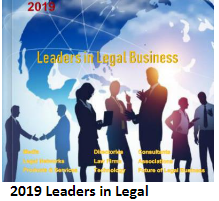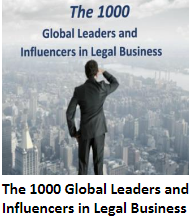Fernando Pelaez-Pier Past President, International Bar Association; Principal, Hoet Pelaez Castillo
Duque
Fernando Peláez-Pier is a past president of the International Bar Association and a founding member of Bentata Hoet & Asociados (now Hoet Pelaez Castillo & Duque), created in 1977. He is a graduate of the Iberoamericana University, Mexico City; Paris University (diplôme d’études supérieures); and the Universidad de Los Andes, Merida, Venezuela., where he currently leads as one of its corporate partners. Mr Peláez-Pier practices in the areas of contract negotiations, mergers and acquisitions, foreign investments, project finance, and alternative dispute resolution. Prior to joining Hoet Pelaez Castillo & Duque, Mr Peláez-Pier was responsible for setting up the London office of Bomchil, Castro, Goodrich, Claro, Arosemena & Associates and was director of their Paris and London offices from 1972 to 1976. He was an associate at Goodrich, Riquelme & Associates, Mexico City from 1967 to 1972. Mr Peláez-Pier was chairman of the Federation of Binational Chambers of Commerce of the European Community (FEDEUROPA) 1981–1982; Lex Mundi chairman, 1992–1993, and served as vice president of the International Bar Association (IBA) (2007–2008); secretary-general (2005–2006), chair of the IBA Section on Business Law (2002–2004), vice-chair (2000–2002), and secretary-treasurer (1998–2000). He is a member of the advisory board for the Institute for International and Comparative Law and the Interamerican Bar Association. Mr Peláez-Pier has been awarded the Miranda State Bar Association Gran Orden del Colegio de Abogados del Estado Miranda (2003) and the Professional Merit Award by Caracas Bar Association “Miguel José Sanz” (2003).
The International Bar Association: A Story of Leadership and Success
The International Bar Association was founded on February 17, 1947 by a group of 34 national bar associations who sought to follow in the footsteps of the United Nations (U.N.) by helping to institute law and justice on a global scale. today, 72 years later, the IBA is the leading association of lawyers and is known as the “global voice of the legal profession.”[1] In this article, we will discuss the history of the IBA and why it has gained its leading position among bar associations, law societies, and practicing lawyers from around the world.
For the success of any organization, it is essential to
have clear objectives in order to perform its activities and deliver its
services to its constituency. The IBA leadership has adjusted its structure and
objectives since its inception in order to adapt to the challenges imposed upon
the legal profession and to best serve its members.
In 1969 and 1970, the IBA leadership made important
changes. It decided to move the IBA headquarters form New York to London, to admit
individual lawyers to the Association, and to establish the former Section on
Business Law.[2] These
decisions marked a turning point for the Association, attracting not only bar
associations and law societies, but also business lawyers from every continent.
In the following years, the IBA leadership made another important decision to
establish the Section on General Practice and the Section on Energy and Natural
Resources.[3]
Major changes were made in 2004 and 2011. The IBA
leadership decided to conduct a careful review of the structure of the
Association. As a result of such initiative, currently the structure of the
Association is focused on two main divisions: the Legal Practice Division (LPD)
and the Public and Professional Interest Division (PPID), the latter of which
has three subdivisions: the Section on Public and Professional Interest (SPPI),
the Bar Issues Commission (BIC), and the Human Rights Institute (HRI).[4]
The organization’s principal goals and objectives are:
.
To promote an exchange
of information between legal associations worldwide.
.
To support the
independence of the judiciary and the right of lawyers to practice
their
profession without interference.
. Support of human rights for lawyers worldwide through its Human Rights Institute.[5]
The IBA works toward these goals by means of
1.
Services
for individual lawyer members through its divisions, committees and
constituents.
2.
Support
the activities of bar associations and, in particular, developing bars.
3.
Support
human rights for lawyers worldwide.[6]
Why
has the IBA become the leading association of individual lawyers and bar
associations, and why is it known as the global voice of the legal profession?
IBA
individual members are practicing lawyers covering all the different areas of
practice and professional interests. At present, there are more than 55,000
individual members. IBA member organizations comprise more than 205 bar
associations and law societies. IBA members come from all regions of the world,
representing more than 126 countries.
IBA
provides members with access to leading experts and up-to-date information.
Through the committees of the divisions (more than 40 specialized committees),
the IBA enables the exchange of information and views among its members as to
laws and professional responsibilities relating to the practice of law around
the globe.
Within
the IBA, we found the behaviors that James Scouller called “the four dimensions
of leadership”: “(i) a shared, motivating group purpose; (ii) action, progress
and results; (iii) collective unity or team spirit; and (iv) individual
selection and motivation.”[7]
The
IBA has group leadership. Its management board, councils, and officers provide
direction and guidance to the association and its divisions, sections,
committees, and interest groups as a whole. At the same time, the sections,
committees, and interest groups (through their officers) provide direction and
guidance to their members.
We
can identify specific characteristics within the IBA such as awareness of unity
and interpersonal relationships; its members have the opportunity to
contribute, learn, and work with others and to act together toward a common
goal.
Within
the IBA, we find “leaders who demonstrate persistence, tenacity, determination,
and synergistic communication skills will bring out the same qualities in their
groups. Good leaders use their own inner mentors to energize their team and
organizations and lead a team to achieve success.”[8]
The
IBA’s leaders are individual practicing lawyers holding positions at all
different levels of the association, from sub-committee officers up to the
president. The need for leaders at all levels is a requirement for an
association to build and maintain its leadership, and there is no doubt that
this has been the cornerstone upon which to build the success of the IBA.
[Ken]
Ogbonnia (2007) defines an effective leader “as an individual with the capacity
to consistently succeed in a given condition and be viewed as meeting the
expectations of an organization or society.” Leaders are recognized by their
capacity for caring for others, clear communication, and a commitment to
persist.[9]
Among
other characteristics, a leader must also be intelligent, assertive, energetic,
and flexible, with initiative, good judgment, and strong personality.
Different components of the IBA have contributed to the
development of law, either assisting post-conflict countries to create their
regulatory framework or drafting laws, regulations, and codes on different
areas of law and practice. Its different publications are well recognized, and
its data bank is a source of knowledge for both law students and practicing
lawyers. The annual conference and the specialized conferences (more than 50)
that the IBA organizes every year represent a unique opportunity to analyze and
discuss the latest developments in all the different areas of business and
commercial law, as well as public interest topics, while also serving as an
excellent networking platform for all members from around the globe.
Here are just a few examples of the IBA’s work that are recognized internationally:
· the Arbitration Committee guidelines on
Conflicts of Interest on International Arbitration[10];
· the Rules on the Taking of Evidence in
International Arbitration[11];
· the Anti-Corruption Guidance for Bar
Associations and the Handbook on General Agreement on Trade
in Services (GATS) published by the Bar
Issues Commission[12];
· the Anti-Corruption Strategy undertaken
by the IBA, the Organization for Economic Cooperation and
Development (OECD), and the UN Office on
Drugs and Crime (UNODC)[13];
and
· the reports of Task Forces on Climate Change, Justice, and Human Rights[14]; on the Financial Crisis[15]; on International Terrorism[16]; and on Extraterritorial Jurisdiction.[17]
Moreover, the work of the IBA on human rights through its
Human Rights Institute must be praised for the work done around the world
supporting the rule of law and its fundamentals.
The
IBA’s work through conferences, special projects, task forces, working groups,
publications, and permanent research on the development of law and the
challenges faced by the legal profession can be considered as the best or one
of the best continuing legal education programs. As a former IBA president used
to say, “the IBA offers to its members one of the best master of laws.”
Being a member of the IBA for almost 30 years and one of
its former leaders, I have witnessed firsthand the ongoing development of the
association and its different components, which has been possible because of
the commitment and hard work of its leaders and staff, and the support of its
members. This understanding is supported by my experience as officer of the IBA
(from secretary general to president); my service on the former Section on
Business Law (from secretary-treasurer to chair) and the Latin American
Regional Forum (founder and chair); and my participation as chair and co-chair
of different initiatives, such as the Task Force on International
Multijurisdictional Commercial Practice, the Task Force on the restructuring of
the IBA regional activities, and the last Committee Review to modify the
structure of the association. This experience allowed me to gain in-depth knowledge
of the inner workings of the IBA and the leadership shown by its members and
officers, which translates into an influential force in the legal profession.
Their drive and work are definitely the paramount factor of the success of the
organization and the advancement of legality.
Analyzing the structure, the leadership, the work, and the different initiatives undertaken by the different components of the IBA, it is evident why it is the global voice of the legal profession.
[1] THE INTERNATIONAL BAR
ASSOCIATION, ABOUT THE IBA, http://www.ibanet.org/About_the_IBA/About_the_IBA.aspx.
[2] THE INTERNATIONAL BAR
ASSOCIATION, KEY MILESTONES, http://www.ibanet.org/About_the_IBA/Key_milestones.aspx.
[3] Id.
[4] Supra note
2.
[5] Id.
[6] Id.
[7] JAMES SCOULLER, THE THREE
LEVELS OF LEADERSHIP (2011).
[8] BART BARTHELEMY, THE SKY IS
NOT THE LIMIT – BREAKTHROUGH LEADERSHIP (1997).
[9] JAMES SMITH, LEADING FROM
THE MIDDLE: WHAT YOU NEED TO KNOW 8 (2012).
[10] See THE ARBITRATION
COMMITTEE GUIDELINES ON CONFLICTS OF INTEREST ON INTERNATIONAL ARBITRATION, http://www.ibanet.org/ENews_Archive/IBA_July_2008_ENews_ArbitrationMultipleLang.aspx.
[11] See IBA GUIDES, RULES
AND OTHER FREE MATERIALS, http://www.ibanet.org/Publications/publications_IBA_guides_and_free_materials.aspx.
[12] Id.
[13] See IBA OECD UNODC
ANTI-CORRUPTION STRATEGY FOR THE LEGAL PROFESSION: AN UPDATE, http://www.ibanet.org/ENews_Archive/IBA_24September_2010_AntiCorruption_Strategy_update.aspx.
[14] See PRESIDENTIAL TASK
FORCE ON CLIMATE CHANGE, JUSTICE, AND HUMAN RIGHTS, http://www.ibanet.org/PresidentialTaskForceCCJHR2014.aspx.
[15] See PRESIDENTIAL TASK
FORCE ON THE FINANCIAL CRISIS, http://www.ibanet.org/PresidentialTaskForceFinancialCrisis2013.aspx.
[16] TERRORISM AND INTERNATIONAL
LAW: ACCOUNTABILITY, REMEDIES AND REFORM, http://www.ibanet.org/Article/Detail.aspx?ArticleUid=51568C67-
85A1-4465-944B-A05E4A17021B.
[17] INTERNATIONAL BAR ASSOCIATION, REPORT OF THE TASK FORCE ON EXTRATERRITORIAL JURISDICTION (2009).

 Software
Software Law
Law Legal
Legal






